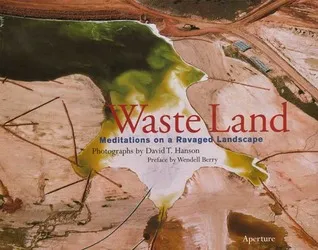Waste Land: Meditations an a Ravaged Landscape
By (author): "Maria B. Pellerano, Peter Montague, Susan Griffin, William Kittredge, Mark Dowie, Wendell Berry, David T. Hanson"
ISBN0893817260
ISBN139780893817268
AsinWaste Land: Meditations an a Ravaged Landscape
Original titleWaste Land: Meditations an a Ravaged Landscape
In Waste Land, photographer David T. Hanson presents a picture of our environment that is unfamiliar and deeply disturbing. It is, however, a picture that must be looked at and contended with if our environment is to survive. In the words of writer Wendell Berry, Hanson has "given us the topography of our open wounds." Waste Land is a powerful book that will not permit us to turn our backs on the declining state of our environment. Waste Land opens with a series of photographs of strip mines in Colstrip, Montana that Hanson created in the early 1980s, a series he describes as "a chronicle of entropy, an elegy for a lost landscape." Ultimately, the series reveals Colstrip as arena and metaphor for the use, misuse, and abuse of power. Hanson's Minuteman Missile Sites series focuses on one aspect of the American industrial and military landscape: bleak aerial views of silos, each containing a missile with a destructive potential nearly a hundred times that of the bomb dropped on Hiroshima. The harrowing centerpiece of this book is Hanson's Waste Land series. Waste Land is a study of sixty-seven of the most dangerously polluted toxic waste sites in the United States. In this series of triptychs, Hanson juxtaposes an aerial photograph, a modified topographic map, and an EPA site description exposing some of the elaborate legal strategies that corporations and individuals have used to avoid taking responsibility for the contamination - or the cleanup. The book's final sequence is devoted to Hanson's recent series, ironically entitled "The Treasure State": Montana 1889-1989. Here, the photographer begins with an aerial view of a site that affects one of Montana's imperiled species, andoverlays each image with a sheet of glass, discreetly etched with the name of the impacted animal. Perhaps the most visually abstract series in the book, "The Treasure State" features haunting, intensely colorful images that lure the viewer in, only to be struck by the realization that
